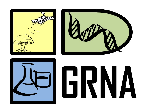Banca de DEFESA: CLAUDIANE SARMENTO VIANA
Uma banca de DEFESA de MESTRADO foi cadastrada pelo programa.STUDENT : CLAUDIANE SARMENTO VIANA
DATE: 28/11/2023
TIME: 13:30
LOCAL: Sala 432 - BMT2 - UFOPA/Campus Tapajós
TITLE:
FUNGAL DIVERSITY AND COMPLEXES OF FUSARIUM SPECIES ASSOCIATED WITH CASSAVA ROOT ROT
KEY WORDS:
EF1-α. PCR-RFLP. Species complex. Taxonomy, Phytopathogens.
PAGES: 60
BIG AREA: Outra
AREA: Ciências Ambientais
SUMMARY:
Cassava (Manihot esculenta) is of great importance in the western region of Pará, but faces phytosanitary problems, caused by phytopathogens, mainly of the genus Fusarium, which cause dry root rot. Therefore, the present work aimed to: a) determine the fungal diversity in 21 isolates associated with cassava root rot by sequencing the ITS region; b) differentiate the species belonging to the Fusarium species complexes through sequencing and analysis via in silico PCR-RFLP of the ITS + EF-1α regions and c) verify pathogenicity using the Koch postulate test, through inoculation in healthy roots. Roots with rot symptoms were collected and isolated after disinfection. The Koch postulate test was performed using healthy roots to test pathogenicity. DNA extraction was carried out by maceration in liquid nitrogen using the promega Wizard kit. Sanger sequencing was conducted, which involved analysis of electropherograms, manual edits in Bioedit, assembly of consensuses in CAP3 and use of Blast to obtain a preliminary identification, followed by comparison with sequences of type species by construction and phylogenetic trees in the MEGA software. For the development of the in silico PCR-RFLP, sequences were obtained from the study itself or type sequences or from collections present in the NCBI Genbank, with 36 restriction enzymes being analyzed in the nebcutter to determine the gene region with the greatest potential for differentiating the species in the complexes, and the best combinations of restriction enzymes to be used. A dendrogram was constructed based on the constraints using Jaccard index and UPGMA with 500 boostrap resamples. The samples showed variations in diversity, with the presence of eight fungal genera Fusarium, Rhizopus, Galactomyces, Trichoderma, Penicillium, Chaetomium and Corallomycetella. The combination of region of interest and restriction enzyme that demonstrated the greatest discriminatory potential of phylogenetic lineages, based on in silico analyses, was EF1-α. It was found that Fusarium isolates fall into four distinct complexes, namely: Fusarium incarnatum-equiseti, solani, fujikuroi and oxypsorum. The pathogenicity test indicated that the isolates causing lesions belong to the solani complex. The use of PCR-RFLP showed that it was possible to differentiate Fusarium isolates by placing them in different groups within the complex. Therefore, this approach can be a valuable tool for identifying and targeting the sequencing of Fusarium species associated with cassava diseases.
COMMITTEE MEMBERS:
Presidente - 1966924 - CARLOS IVAN AGUILAR VILDOSO
Externo ao Programa - 1783034 - EDWIN CAMACHO PALOMINO - UFOPAInterno - 1327077 - LUIS REGINALDO RIBEIRO RODRIGUES
Externo ao Programa - 1793956 - MARCOS PRADO LIMA - null




